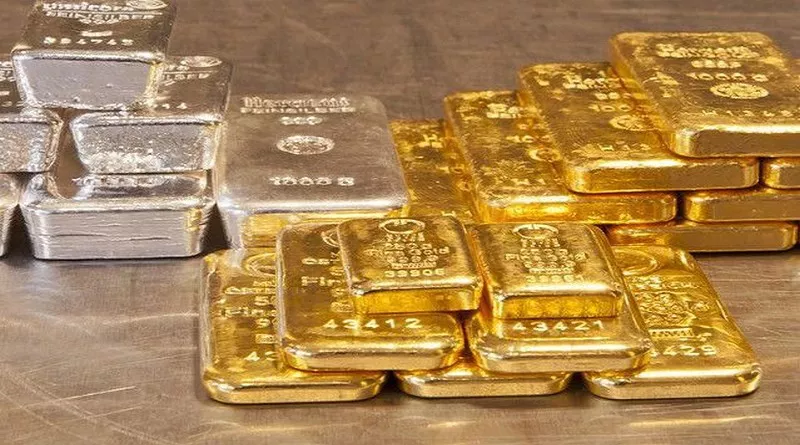Gold, often hailed as the ultimate safe-haven asset, experienced a notable drop in its price recently, leaving investors and analysts puzzled. Traditionally viewed as a hedge against economic uncertainty and inflation, gold’s price movements are closely monitored as indicators of market sentiment. In this article, we will delve into the multifaceted reasons behind the recent decline in gold prices and analyze the broader economic factors at play.
U.S. Dollar Strength:
One of the primary factors contributing to the drop in gold prices is the strength of the U.S. dollar. Gold and the dollar typically exhibit an inverse relationship, meaning that as the value of the dollar rises, the price of gold tends to fall. The U.S. dollar index (DXY), which measures the dollar’s value against a basket of other major currencies, has been on an upward trend due to various factors, including robust economic indicators, higher interest rates, and global demand for the greenback.
As investors seek higher returns in a strong-dollar environment, the appeal of non-interest-bearing assets like gold diminishes. The prevailing narrative of a resilient U.S. economy and the Federal Reserve’s hawkish stance on interest rates have contributed significantly to the recent surge in the dollar, thereby pressuring gold prices downward.
See Also What Is The Golden Cross In Trading
Rising Interest Rates:
Another pivotal factor influencing gold prices is the trajectory of interest rates. Gold’s appeal fades in a rising interest rate environment, as it does not generate any income or yield. The Federal Reserve’s decisions regarding monetary policy play a crucial role in shaping market expectations. Recently, signals of potential interest rate hikes have reverberated through financial markets, prompting investors to reevaluate their portfolios.
The prospect of higher interest rates dampens the attractiveness of gold as an investment, leading to a sell-off in the precious metal. Additionally, higher interest rates increase the opportunity cost of holding gold, as investors may opt for interest-bearing assets instead.
Easing Inflation Concerns:
Gold has historically been viewed as a hedge against inflation, and its prices often surge during periods of economic uncertainty or rising inflation. However, the recent decline in gold prices can be partially attributed to a reassessment of inflation expectations.
While inflationary pressures were a significant concern in the aftermath of the global financial crisis and, more recently, during the COVID-19 pandemic, central banks and policymakers have taken steps to address inflation. As economic recovery gains momentum, the fear of runaway inflation has subsided, leading to reduced demand for gold as a protective asset.
Global Economic Recovery:
Gold’s decline is also intertwined with the broader global economic recovery. As economies rebound from the impacts of the pandemic, risk appetite among investors has increased. During times of economic expansion, investors often shift their focus to riskier assets, such as equities, at the expense of safe-haven assets like gold.
Positive developments in the global economy, including robust GDP growth, improving employment figures, and increasing consumer confidence, have propelled investors towards riskier investments. Consequently, gold, often considered a conservative store of value, has faced selling pressure in the face of a more optimistic economic outlook.
Technical Factors and Speculative Trading:
Technical factors and speculative trading play a significant role in shaping short-term price movements in the commodities market, including gold. Traders often rely on charts, trends, and other technical indicators to make decisions, contributing to short-term volatility.
Speculative trading, driven by sentiment and market psychology, can lead to sudden and sharp movements in gold prices. A cascade of sell-offs triggered by technical factors, combined with heightened volatility, can exacerbate price declines. In recent times, increased algorithmic trading and the prevalence of high-frequency trading have added an additional layer of complexity to gold price dynamics.
Conclusion:
The recent drop in gold prices can be attributed to a confluence of factors, including the strength of the U.S. dollar, rising interest rates, easing inflation concerns, the global economic recovery, and technical factors influencing speculative trading. Investors and analysts must consider these interconnected elements when assessing the outlook for gold prices.
While short-term fluctuations are inevitable in financial markets, the fundamental drivers of gold’s value as a hedge against economic uncertainty and a store of value remain intact. As market dynamics continue to evolve, ongoing vigilance and a nuanced understanding of the interplay between various factors will be crucial for investors navigating the complex landscape of the precious metals market.


